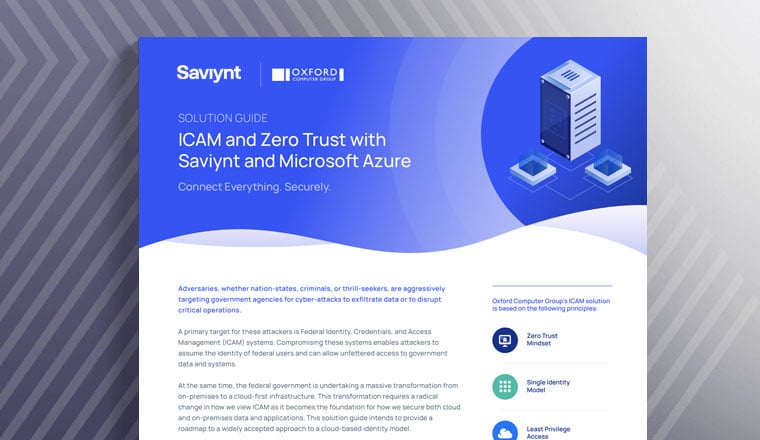What is Attack Surface?
An “attack surface” is a sum of all the different attack vectors, or points vulnerable to attack, in a software environment. These attack vectors include all software and hardware connected to a network, representing all points where data could be inserted or extracted from the environment by a nefarious hacker. The attack surface includes websites, applications, code, ports, servers, and other devices, both IT-authorized or used without authorization (shadow IT).
Companies strive to minimize the size of their attack surface as a best practice in computer security. Digital transformation, cloud-based services, and remote workforces have dramatically impacted the attack surface of today’s enterprise. The size of an attack surface changes with time as services, systems, and assets are added to the software environment. For example, as you add websites, servers, and cloud services to the ecosystem, your attack surface will fluctuate.
Common Vulnerabilities in your Attack Surface
An attack surface may have many components. Here is a list of common elements that represent vulnerabilities in your attack surface:
- SSL Certificates and attribution
- Internet ports and services
- NetFlow
- Web frameworks
- Autonomous System Numbers (ASNs)
- Domains and sub-domains
- Databases
- Applications
- IP address and IP blocks
- Public and private clouds
- WHOIS records, contacts, and history
- Host and host pair services and relationships
Data breaches can happen in many different ways. Some of the most common attack vectors companies should be aware of include:
- Cyberattacks involving malware such as ransomware, trojans, viruses, man-in-the-middle attacks, and phishing
- Unauthorized network access as a result of compromised passwords
- Inside threats, social engineering, and other human security risks
- Outdated or vulnerable software
Impacts of a Broad Attack Surface
Poor attack surface management may result in costly and destructive cyberattacks. These data breaches hurt your brand and deteriorate trust within your customer base. Trust is difficult to rebuild, and its loss may have a cascading financial impact.
Loss of trust is not limited to your customers; it extends to your partners too. Existing business plans involving other partner companies may be put at risk. The financial impact will likely go well beyond the loss of trust, resulting in direct costs in IT spending and potential legal issues.
Minimizing Attack Surface Means Taking A Zero Trust Approach
Today’s blended workforce and cloud ecosystem require a modern approach to governing and managing identities in the cloud. The best way for an organization to reduce its attack surface is to implement a Zero Trust model that continuously re-evaluates the risk and trust level of every digital interaction. Basically, the Zero Trust approach implies that your systems are set up to trust no one. You have separation of duties in place and are enforcing least privilege so that users only have access to the right sensitive data for the least amount of time.
Refactoring your security architecture to support modern cloud-based technologies requires a modern identity solution that integrates with existing security and compliance tools. This way, a Zero Trust Identity Architecture can continue to enforce existing use cases while enabling the creation of new ones. Achieving this requires architecture built upon interoperable solutions that can readily exchange information. This will also enable your organization to make use of visibility, risk, and threat intelligence to drive automated decision-making.
In the wake of several high-profile cyberattacks and security breaches involving federal agencies, the National Institute of Standards and Technologies (NIST) created an abstract definition of a Zero Trust Architecture along with several deployment models. Elaborated in NIST SP 800-207, Zero Trust Architecture, this model provides a roadmap for enterprise security architects looking to implement Zero Trust-based approaches to information security.
Building a Zero Trust architecture isn’t a simple, one-step process. It instead requires implementing new solutions that can gather intelligence across your IT ecosystem and inform the SASE, access management, and security tools that enforce policies. Designing such an architecture means thinking differently about interconnectivity and the value of an open, standards-based approach. It means thinking smarter in your entire approach to identity and security across your organization
How Saviynt’s Identity Cloud Helps Secure Your Attack Surface
Saviynt’s Identity Cloud is built in the cloud, for the cloud, and is the only FedRAMP authorized SaaS solution for Identity Governance and Administration (IGA) and Cloud Privileged Access Management (CPAM). The fundamentals of IGA align closely to the requirements outlined in Federal Identity Credential and Access Management (FICAM).
Saviynt Identity Cloud is a modular, converged cloud platform developed entirely in-house using a single code base without bolted-on solutions from third-party acquisitions to complicate the implementation process. Each solution can operate independently, allowing customers to select the product that suits them — and integrate Identity Cloud with existing solutions.
Saviynt Identity Cloud includes the following solutions:
Identity Governance and Administration (IGA):
- Ensures that users have seamless access and your organization is in continuous compliance
- Increases organizational efficiency and agility through automation and intuitive identity workflows
- Drives frictionless user experience powered by a comprehensive identity warehouse
- Enables Zero Trust in your hybrid and multi-cloud environment
Cloud Privileged Access Management (CPAM):
- Provides complete privileged access protection to support ongoing business transformation and scale as your business needs evolve
- Delivers visibility and governance for every identity across your entire environment to improve your security posture and maintain compliance
- Deploys rapidly and is easy to manage, so you realize value on day one
- Limits users’ actions in the end systems and provides session recording and an auditable record of the activities executed
Application Access Governance (AAG):
- Protects sensitive application access and satisfies governance, risk, compliance (GRC) requirements
- Provides comprehensive capabilities in Separation of Duty (SoD) analysis, emergency access management, role engineering and management, compliant provisioning, and access certification
Data Access Governance (DAG):
- Discovers, analyzes, and protects sensitive structured and unstructured data — regardless of whether your IT ecosystem is on-premises, hybrid, or cloud-based
Third-Party Access Governance (TPAG):
- Securely manages third parties throughout the engagement lifecycle
- Shepherds the account from inception, through access management, periodic reviews, and eventual decommissioning with internal and external sponsors
In Conclusion
The growth of cloud computing and the shift to blended work environments represent an expanded attack surface that is prone to cyberattacks. Saviynt Enterprise Identity Cloud provides one of the strongest solutions on the market for moving towards a Zero Trust environment and preventing new and innovative attacks.
Resources


